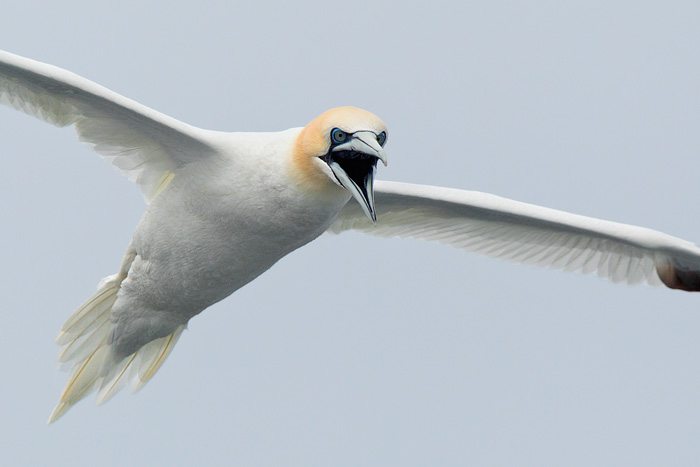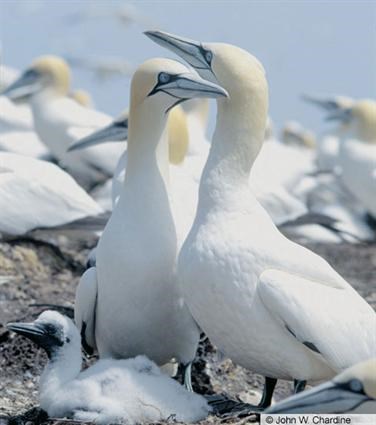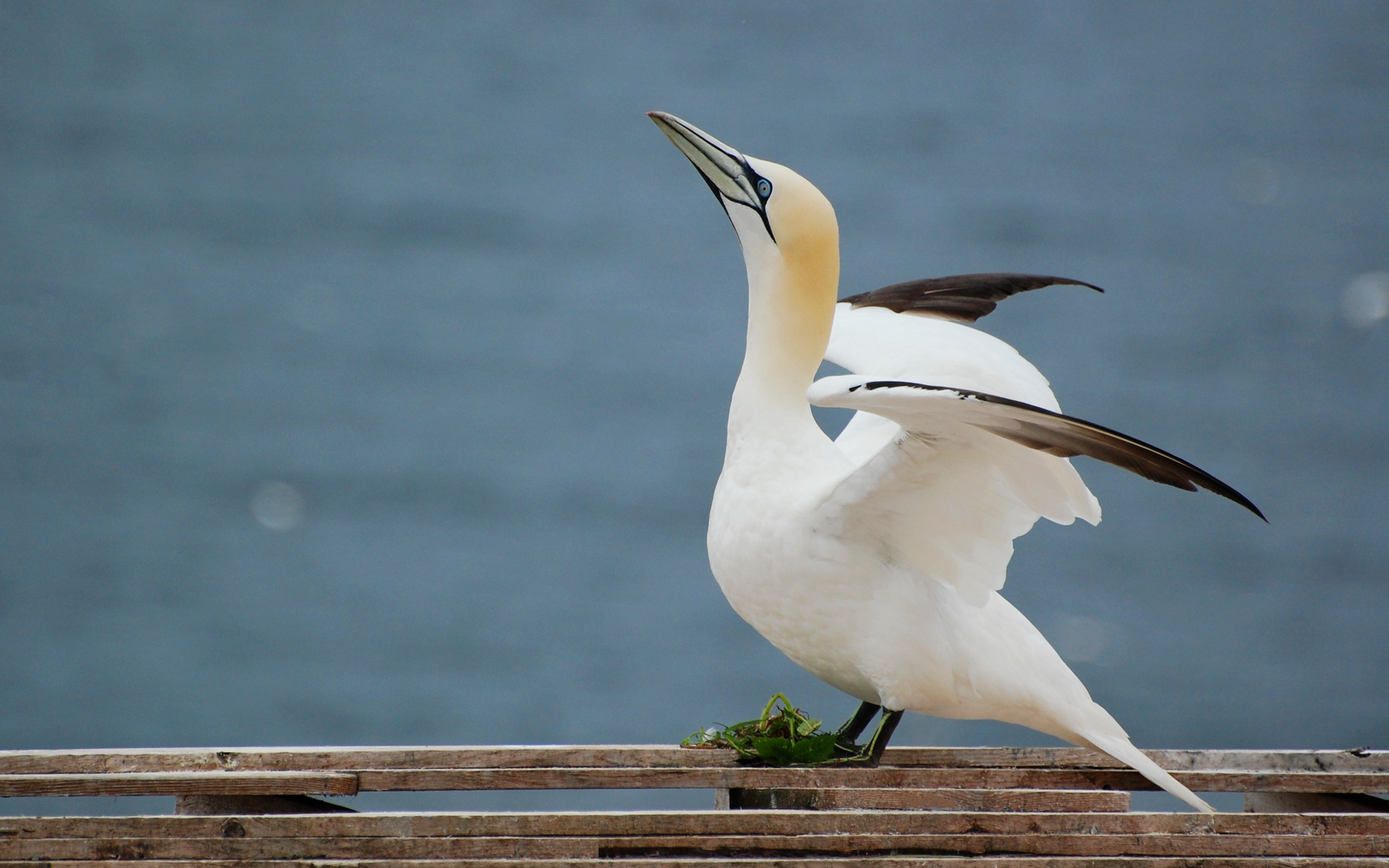
Morus bassanus
TAXONOMY
Pelecanus Bassanus, Linnaeus, 1758, Bass Rock, Scotland.
Monotypic.
OTHER COMMON NAMES
English: (North) Atlantic gannet; French: Fou de Bassan; German:
Basstцlpel; Spanish: Alcatraz Atlбntico.
PHYSICAL CHARACTERISTICS
34.3–39.4 in (87–100 cm); 5.1–7.9 lb (2.3–3.6 kg); wingspan
65–70.9 in (165–180 cm). Largest of sulids, a strong bird with
mainly a strikingly white plumage. Compared with other gannets,
bill is slightly stouter and head is paler cream. Juveniles
mainly dark brown, gradually gaining white feathers of adult
plumage.
DISTRIBUTION
Exclusively in the north Atlantic, where breeds on both sides
46–72° north. More widespread on eastern side, where in winter
also enters the Mediterranean Sea and disperses south to
subtropical waters. On western side, breeds on islands off
Newfoundland and in the Gulf of St. Lawrence (Canada) and
disperses south in winter to the Gulf of Mexico.
HABITAT
Strictly marine, mainly in waters over the continental shelf.
Breeds on cliffs on offshore islands or, more rarely, on mainland.
BEHAVIOR
Breeds in dense colonies where aggressiveness and intense social
BEHAVIOR
have given way to complex repertoire of stereotyped
displays. Breeding birds acquire a nest-site, which they
then defend against intruders and maintain from year to year.
Pair
BEHAVIOR
is equally complex and linked to the nest-site. At
sea, often occurs in groups particularly congregating around
rich feeding sources but with little interaction.
FEEDING ECOLOGY AND DIET
Feeds on shoaling pelagic fish like herring (Clupea), mackerel
(Scomber) and sprat (Sprattus), also sandeels (Ammodytes). Makes
spectacular plunge-dives from great heights. Also regularly attends
trawlers.
REPRODUCTIVE BIOLOGY
Highly seasonal, starting March through April. Forms large
colonies on cliffs or on flat ground, where builds large nest of
seaweed, grass, etc. and a significant amount of excreta. Lays
one egg only, incubated by both parents for 44 days. Chick
fledges at 90 days; on its own, after it has been deserted by
parents. Does not breed until four to five years old.
CONSERVATION STATUS
Not threatened. Abundant and widespread throughout its
range. Protection of breeding sites and cessation of former direct
exploitation of chicks (for food) led to significant recovery
over most of twentieth century. Overexploitation of fisheries
remains an important threat; also suffers some degree of incidental
mortality at sea.
SIGNIFICANCE TO HUMANS
Chicks used to be taken for food in some local communities, a
practice that still continues in a few places (e.g., Sula Sgeir, off
Scotland). Also present in literature and art. Nowadays
colonies may constitute important sources of income locally, as
tourist activities are developed around them.
Other popular Animals
Photo Gallery of - Northern gannet




 Animalia Life
Animalia Life